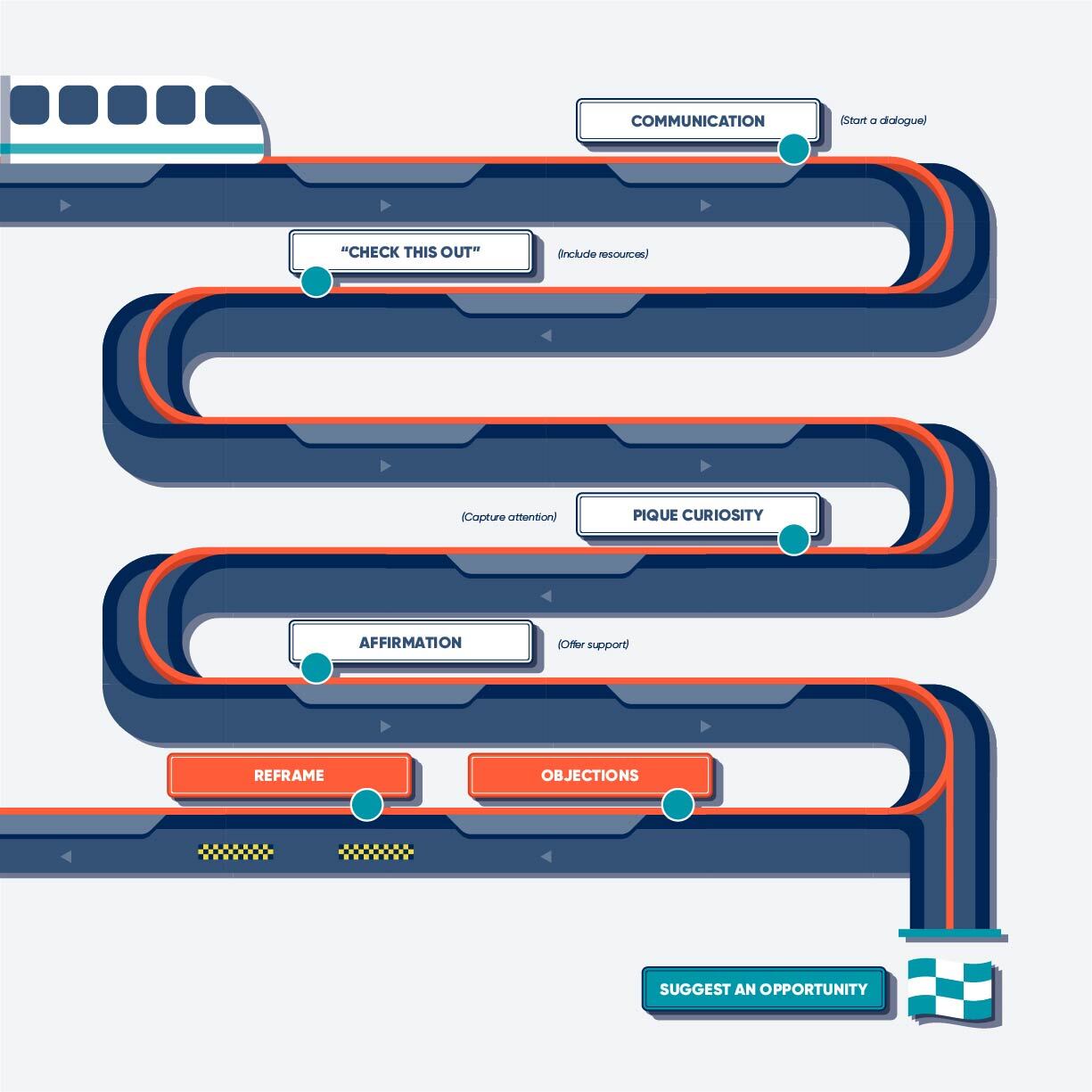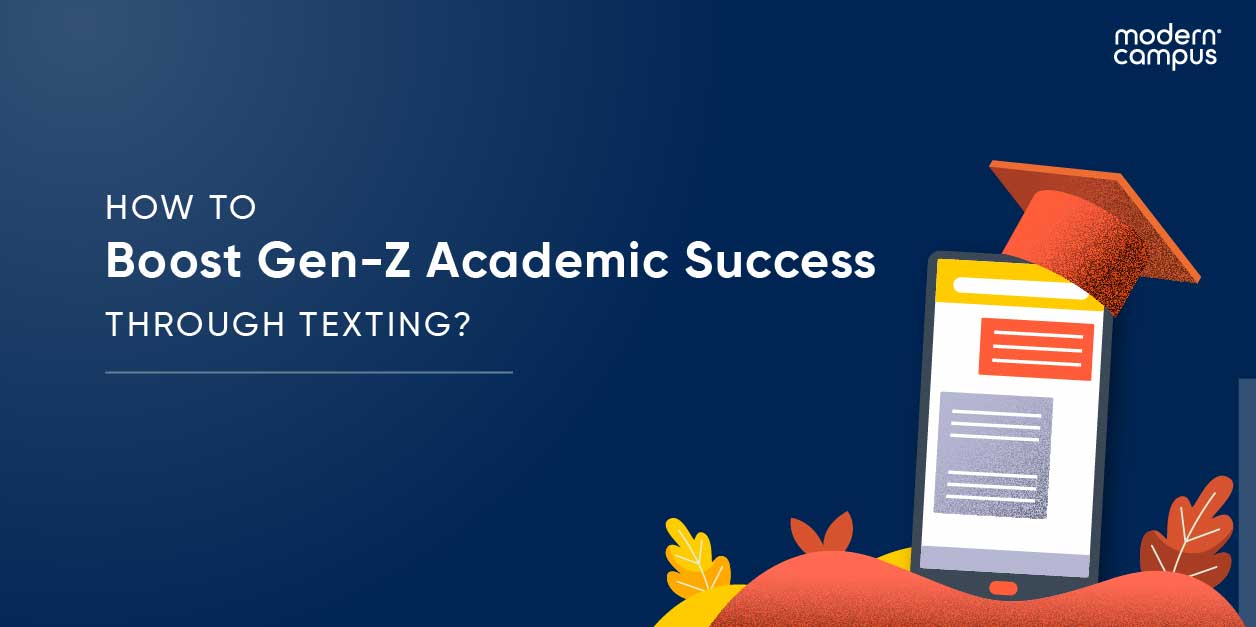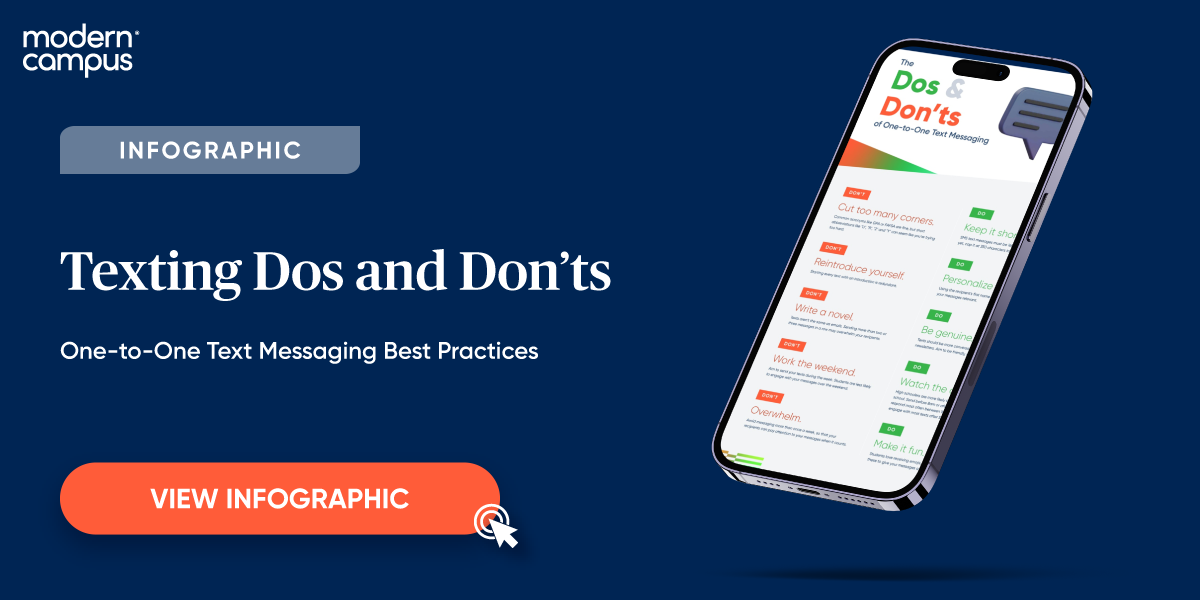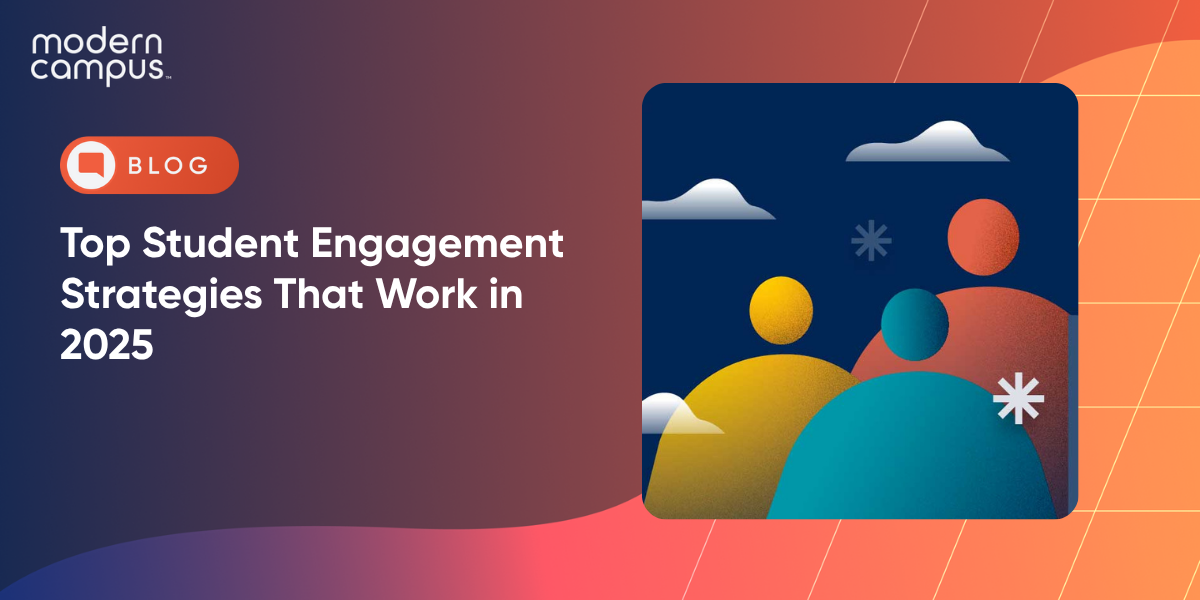3 Ways to Boost Gen-Z Academic Success Through Texting
Many of your students spend more time on their smartphones than they do in class or co-curricular programming.
One study found that the average member of Generation Z—adults, teens, and kids born between 1997 and 2012—actively engaged with their phone for four hours and fifteen minutes every single day.
Want to get that number down to zero? Good luck. A majority of Gen Z-ers say they wouldn’t give up their phone for $1 million, with 43% holding out for more than $5 million.
So, if you can’t beat them, consider joining them. Recent research from Peak Education, in partnership with Modern Campus, found that educators who embrace the digital revolution see tangible benefits.
Through its pilot texting program, Peak Education found that “open” texting—personalized, relationship-building text messages sent from academic advisors or counselors—significantly correlated with GPA increases.
And it wasn’t just among superstar students; the greatest benefits were experienced by learners identified as “high-need,” those who struggled with low GPAs during the first few months of the COVID-19 pandemic.
Discussed below are three key tips for boosting student success —perfect for academic advisors and other support staff who engage with Generation Z and are inspired by Peak Education’s pilot study.
1. Keep Your Messages Consistent
In Peak Education’s pilot study, greater GPA increases correlated with greater reply frequencies. In other words, the more students received—and responded to—text messages from their academic advisor, the more likely those learners were to boost their grades.
A single text is unlikely to give students the resources or inspiration they need to propel classroom success. What does work is consistent messaging that builds upon a student’s responses, enabling staff to better understand the student’s interests, goals, and barriers to learning.
Being persistent pays off. By messaging a student at a consistent cadence—nudging, not nagging—during various stages of their education journey, you can pinpoint what content matters most to them and tailor your messaging. A higher ed texting platform with Conversational AI can especially help with this, enabling educators and administrators to personalize higher education texting at scale.
2. Personalize Your Messaging
Everyone prefers to consume content and interact with messaging that feels like it was written just for them. That’s always been true.
But Generation Z has especially limited tolerance for impersonal communication. From the time most Gen Z-ers were adolescents, Netflix, Amazon, Instagram, and other giants of the digital industry have taught them to expect hyper-personalized delivery—and only that. It’s no surprise, then, that the vast majority of Gen Z-ers believe websites will know what they’re looking for before they tell it.
They most certainly expect the same from their higher education institutions. Academic advisors who don’t deliver on personalization will struggle to build relationships through texting—and thus, lessen the likelihood that students will feel a strong affinity for their college or university.
3. Focus on Fostering Students' Trust and Building Stronger Relationships
When staff and faculty put in the work strategies to increase student engagement and start working one-to-one, students value the resulting relationships far beyond transactional assistance. A 2018 poll of Elon University graduates found that the likelihood of an alumnus saying their college experience was "worth it” increased as their number of strong relationships with faculty and staff increased.
Equally notable is that students rarely cultivate these relationships intentionally. In the Elon study, 85% of students with a staff or faculty mentor say the relationship “developed on its own,” perhaps indicating that staff took the first steps.
Lauren Taylor, Director of Programs and Systems at Peak Education, integrated relationship-building techniques throughout the pilot texting program. As noted in the report:
“The Peak Ed leadership believed that, if they could build an “open messaging’ (consistent, positive and reciprocal messaging) approach, as opposed to a ‘transactional messaging’ (inconsistent, telling, non-responsive messaging) approach, it could improve student confidence and create an environment for students to connect with their academics in a new way.”
As summarized by the Open Messaging Student Path that guided Peak Ed’s approach (below), they sought to build students’ trust by starting a dialogue, introducing resources, capturing attention, and offering support. Just as face-to-face communication drives relationships through mutual prompts and responses, so too can texting.

Learn more about Peak Education’s pilot study by digging into the data, reading the executive summary and exploring the research methodology.
Last updated: June 28, 2023





